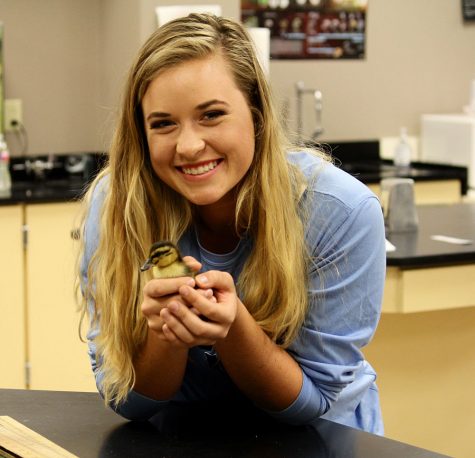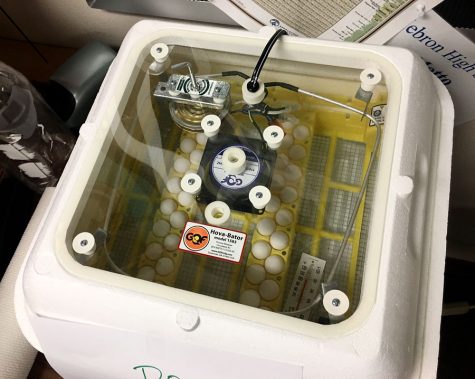Duck Duck Quail
AP science classes hatch birds for learning opportunities.
After watching the incubator for three weeks, AP Biology students became the overjoyed parents to 13 ducklings. In a matter of days, the students of AP Environmental Science will also become ‘bird parents’ to 36 quails. The purpose of rearing live organisms in both classes is to give students a chance to learn about animals’ behavior and restoring ecosystems.
The AP biology classes have been raising live animals for four years, and have slowly been perfecting the project. They initially began the project by hatching chickens, but now are using Rouen ducks to observe and learn from.
“In the beginning we didn’t have good success, and now we have great success obviously with 13 [ducklings hatching out of 20],” AP biology teacher Christie Caldwell said. “Now, we can actually do things with them like collect data, interact with them and raise them.”

During class, students handle the ducks to measure their different physical characteristics, such as beak length or weight, to track the ducklings’ growth before they will be released on coach Danielle Trepagnier’s parents’ farm. However, non-AP Biology students and non-Hebron students can also learn from the ducks by watching Caldwell’s livestream of the ducks on Youtube or USTREAM.
“This year the elementary schools were learning about oviparous animals, so there were like three elementary schools that watched [the live feed],” Caldwell said. “And then also a couple senior citizens got to watch it.”
Similarly, the AP Environmental Science class has begun its second annual live animal project. The class’s 36 Bobwhite Quails will be incubated for about 23 days. As a Texas Master Naturalist, AP Environmental Science teacher Patricia Ehsani worked with the organization to decide how to train the quails to be prepared to be released in the wild.

“Part of what we do [as Master Naturalists] is we work on the restoration of Texas prairies, especially the ones up by Lake Lewisville,” Ehsani said. “I talked with Dr. [Kenneth] Steigman from the University of North Texas, and he said he would love to have Bobwhite Quails that had been trained to be afraid of the Cooper’s Hawk. So, based on [the] work with Dr. Steigman, we recently learned how to hatch the Bobwhite Quail, so we have a very successful hatch rate. We actually have a silhouette of a hawk [attached to a yard stick] that ‘flies’ over the babies, and then we have [recorded] quail calls that sound the alarm and a hawk scream, and then we have little huts made of grass that the baby quail can hide in.”
Through the quail project, Ehsani hopes to introduce her students to the concept of citizen scientists, also known as assisting professional scientists with conservation and educating others about the natural world. Both the duck and quail project will end by May, but students have gained applicable knowledge of caring for organisms and preserving ecosystems.
“I just wanted to learn how quails are trained in a controlled environment,” senior AP Environmental Science student Niyati Modha said. “This has definitely been a memorable project, and I like that I’ve helped the environment.”


